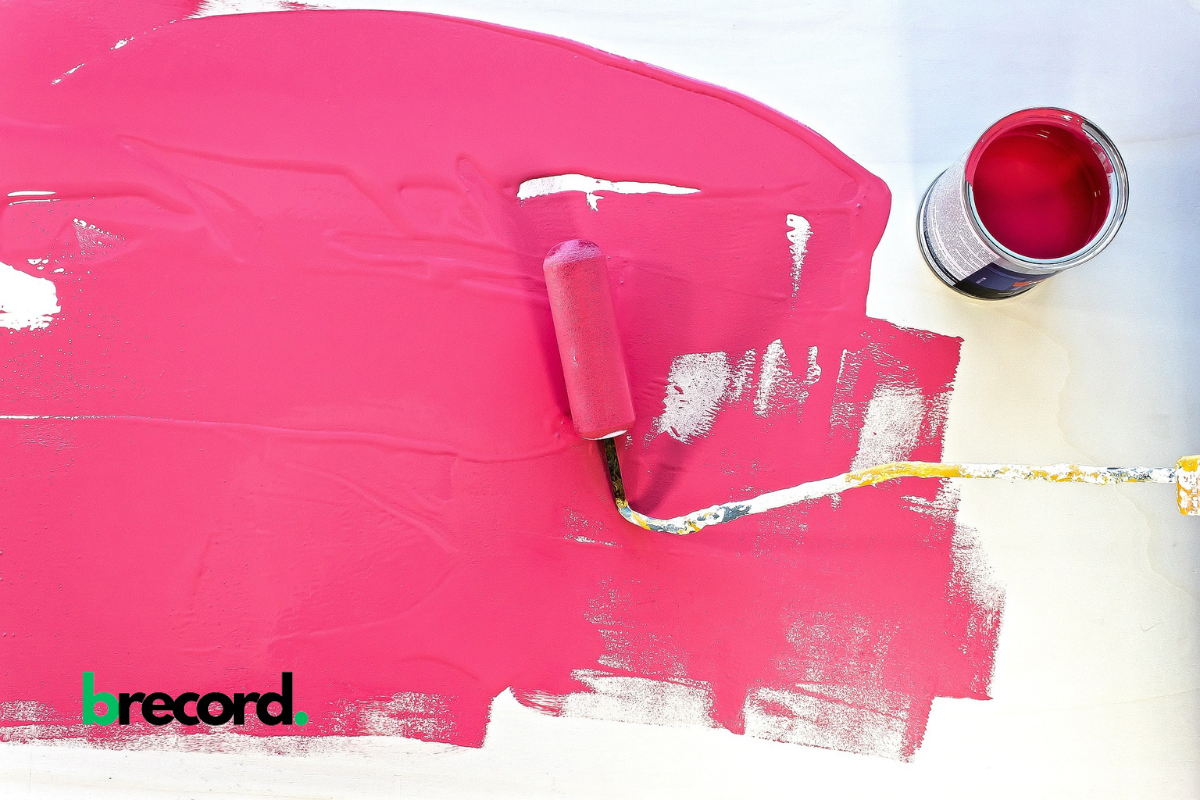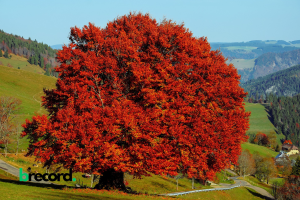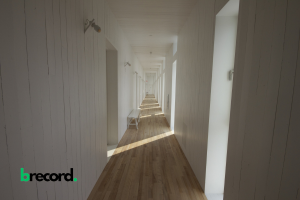Tired of the same old bricks in your compound? be not dismayed as this article is going to take you through the step-by-step process of removing paint from bricks and restoring their original beauty. So look forward to a house with a great exterior appearance with our easy-to-follow steps for a cleaner, more beautiful brickwork. Lets change how your house looks today!
Simple definition of painting on bricks
Are you bored of that irritating paint on your awesome walls? You may find painted bricks to be an eyesore, whether it was done by yourself or left behind by previous owners. But fear not! We will guide you through each step to help you restore them back to their previous glory. Forget about these splotched coloured backgrounds and welcome pristine brick structure!
Why is it important to remove paint from bricks?
Do you know how adding fresh paints can make a room appear new once again? However, when it comes to bricks, the paint only hides the natural beauty and character.
Brick surfaces are recognized for their distinctive texture and earthy colors which add character to any building. These attributes are concealed when they have been coated in paint; thus detracting from the original beauty of such houses. Additionally over time painted bricks get weathered and chipped thereby reducing its visual impact.
Moreover, removing the paint off brick does not only stop at aesthetics but also concerns itself with keeping the material intact. Moisture may become trapped against the brick surface by paint causing problems such as spalling or efflorescence. By stripping away these coats, we allow these materials breathe naturally without necessarily posing structural problems in future.
Basically giving unpainted bricks back means that they are now more appealing than before while promoting property’s durability.
What procedures must one follow when removing paints from bricks?
Are you faced with challenges of doing away with paints on walls made of stones? Do not panic; here is what should be done stepwise.
First things first, before commencing with the process ensure all necessary materials and tools are available. These include paint stripper, a pressure washer, sandblasting equipment, safety gear and brushes or scrapers.
Next, clear up the area around and protect any possible surface with plastic sheets or masking tape. Always be on the safe side when chemicals or machines are involved.
When choosing your method of doing this there are certain factors you must consider including what type of paint was used and how good the bricks look. Chemicals will work but you should be careful while washing with water can be friendly to old bricks.
For better results follow guidelines provided in each manufacturer’s instruction for various methods such as chemical strippers, pressure washing techniques or sandblasting. Before going ahead with larger sections make sure that you have tested a small unnoticeable fraction.
In case some places prove too stubborn or give tough time as far as removing is concerned do not worry! It could take using a wire brush for hard-to-strip paint spots down slowly and few more layers of stripper. It requires lots of patience when it comes to handling difficult spots on bricks.
Acquiring resources and instruments.
For successful paint removal from bricks, it is crucial that one has the right materials and tools. First off, gather a bucket filled with heated water, a soft detergent for dishwashing or paint remover, scrub brush or sponge, goggles for the safety of your eyes, hand gloves and mask to safeguard yourself when undertaking the procedure.
Moreover, you may need to have either a pressure washer or sandblaster depending on which technique you use. These powerful machines speed up the process of removing paints. Ensure all instructions are read carefully before using any equipment.
Delicate surfaces or smaller areas might require chemicals with caution. Always test in an obscure area first to determine if it is compatible with your particular bricks. Remember this job requires patience and attention to detail so take your time and work in a deliberate manner.
By gathering materials and tools ahead of time, you can make the job easier while working towards stripping off paint from your beautiful brick surfaces as well as other smooth surfaces.
Preparing the area and protecting surrounding surfaces
Proper preparation of the area is critical before launching into removing paint from bricks. To avoid accidental damage during paint removal process ensure there are no furniture or items close to the brick surface.
After that, cover windows, doors landscaping using drop cloths/plastic sheeting that will prevent stray particles of paint/chemicals causing unwanted damage whilst restoring your bricks.
Use painter’s tape to outline edges around brick section being worked on. Thereby making sure there is no spillage on adjacent places and clean lines are created.
Taking an extra few minutes to prepare for this job will not only ease things but also guarantee that after effectively removing paint from my bricks I will be satisfied by my efforts in this regard.
Choosing the right method for your specific situation (chemicals, pressure washing, sandblasting)
Considering one’s own particular circumstances when choosing what approach to remove paint from bricks is a must.
Chemicals can be very effective but are also hazardous. Besides, if it is compatible with the brick surface, some chemicals require performing tests in a small area since they can have undesirable effects.
Pressure washing is a faster option that involves using high-pressure water to blast off paint. This procedure should only be undertaken in outdoor areas where excess water will not cause damage or there are appropriate containment protocols for indoors.
Sandblast refers to shooting sand at high velocities such that paint comes off from surfaces. It is very useful but it requires professionals as this might be dangerous if done incorrectly.
Consider such factors as the type of paint, the state of your bricks and how much you like handling instruments prior to making up your mind because all these methods have their own advantages and disadvantages.
Detailed instructions for each method
Now let us get down to dirt about each method which can help you remove paint from bricks. If you choose chemical solution, then start by applying stripper with brush or roller. Follow the manufacturer’s directions and wear protective gear accordingly. Allow chemical to sit for recommended duration before scraping away softened paint.
In case you are considering pressure washing, start by adjusting your machine to a low-pressure setting so as to avoid spoiling the bricks. Hold the nozzle at a slight angle and move across the surface in small sections. Ensure that there is enough space between the nozzle and bricks.
For sandblasting, equip yourself with protective gear such as goggles and respirators before beginning. Silica-free abrasives should be used while equipment settings adjusted according to thickness of paint layers. Carry out systematic work in order not to cause any damage.
Choose wisely, each procedure has its own demands!
- Hints for getting rid of difficult paint or fixes
Eliminating stubborn paint from bricks may pose a challenge but do not worry since there are hints which can help you handle such problematic areas. One of the most effective approaches is using a chemical paint stripper designed specifically for masonry surfaces. Apply it following manufacturer’s instructions and watch the results
Use a wire brush or scraper on particularly tough spots to gently remove the softened paint. Be patient; take your time to prevent harming what lies beneath this texture of stone-work artistry. Another hint could be using heat gun or infrared heater to warm up paint before scraping it off carefully.
As a last resort, one can try using a pressure washer set at low power so as to blow away any remaining traces of colorant from these walls’ coatings. Just ensure that the force does not go towards damaging the brick wall surface being washed out by water jet; never forget perseverance and patience when dealing with hard-to-remove paints on bricks!
Aftercare and maintenance tips (to stop / preventing)
Once all the paints have been removed from your bricks, it will be necessary to take care of them in order for no other painting problems happen again on them. Some aftercare and maintenance tips that will keep your brick surfaces looking beautiful include:
- Check regularly if there is peeling or chipping off on your brickwork. Fixing these issues early enough prevents larger areas from being affected.
- Apply a sealant or protective coat to your bricks after removing the paint. This will assist in repelling water and dirt, respectively, to facilitate cleaning in future.
- Keep other areas well maintained so that there is no overspray when painting nearby surfaces like brick walls.
- Before you apply new paints, ensure that the surface has been properly prepared by thorough cleaning with suitable primers for repainting of bricks.
These maintenance tips will go a long way towards ensuring that paint does not stray into unwanted areas during the painting process on brick wall areas and also help restore their lost beauty!
Is this article helpful? Keep reading our blog for more.



